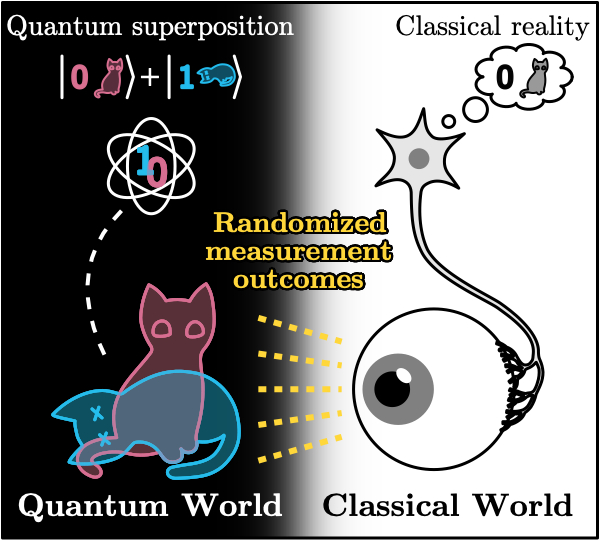Today, I am thrilled to share with you an exciting journey into the heart of quantum mechanics, where we tackle an enduring conundrum in physics – the quantum-to-classical transition. Our research team leveraged the power of artificial intelligence to provide a fresh perspective on this age-old question. We’ve combined innovative artificial intelligence technology with quantum physics to model one of the most paradoxical concepts in quantum mechanics - Schrödinger’s Cat!

The Enigma of Schrödinger’s Cat
Schrödinger’s cat, a thought experiment proposed by physicist Erwin Schrödinger, is a puzzling quantum superposition of states where a cat can be simultaneously dead and alive until observed. However, in our daily experiences, we never encounter such bizarre superpositions. Objects are either here or there, but never both. This raises the pressing question - how does the quantum world transition into the classical world we experience every day? This is what we refer to as the quantum-to-classical transition, and it’s a mystery that scientists have been grappling with for decades.
Unleashing the Power of Artificial Intelligence
To tackle this problem, we sought the assistance of a powerful ally - Artificial Intelligence. We harnessed the power of generative language models, a type of artificial intelligence that’s been used to write human-like text, to model the “classical shadows” of quantum states. These shadows, obtained from randomized local measurements on quantum many-body states, are the classical records of quantum states that disperse in the environment as random noise after the decoherence of the quantum system. However, by collecting these classical shadows of Schrödinger’s cat and processing them on a classical computer, we hope to decode the quantum nature of the cat.
Unveiling Quantum Coherence through Language Models
The idea was to see if these language models could ‘understand’ and reproduce the quantum coherence encoded in the classical shadow data. Quantum coherence is a central feature of quantum mechanics and a key for quantum information processing. It describes the quantum superposition and interference between distinct states in a wave-like manner, encoded in the transition amplitude between the states of alive and dead cat. We find that for smaller quantum systems, a strong enough language model can learn to capture quantum coherence and understand the full quantum reality. However, as the size of the quantum system increases, the model quickly fails to decode the quantum coherence as it is encoded in high-order correlations whose variance grows exponentially with the system size. Therefore, the model can only infer the classical reality from the data.
Unraveling the Quantum Mysteries
This research bridges the gap between the arcane world of quantum mechanics and the familiar classical world, revealing that our perception of the universe’s quantum nature may be limited by our capacity to process classical information. As we continue to refine these models and techniques, we are slowly but surely uncovering the mysteries of the quantum world, bringing us closer to the day when we can fully comprehend and harness the power of quantum mechanics.
This is just the tip of the quantum iceberg! We invite you to dive deeper into the quantum realm with us by reading our full research paper at (arXiv: 2306.14838). Together, let’s explore the fascinating quantum-classical transition and how artificial intelligence can illuminate our path through this complex landscape!
(Written by OpenAI GPT4)
GitHub repository: EverettYou/EmergentClassicality (code and data)
Talk recording: [VIRTUAL] Emergent Classicality from Information Bottleneck (on Machine Learning for Quantum Many-Body Systems @ Perimeter Institute, June 2023)
